What smartphone addiction is, why it’s a problem, and how to fight it
How to End Smartphone Addiction and Protect Your Mental Health

Welcome to your first Smartphone Addicts Anonymous Meeting. I’m Erwin, and I am addicted to my smartphone. To social media. And tech in general.
Who wants to stand up next? Do you have a problem? Or are you afraid someone you know might have an addiction to their smart device, or digital technology in general? Let’s get into it, and let’s solve the problem, a.s.a.p.
Of course, the problem of smartphone and tech addiction has extra relevance after or during the covid-19 pandemic and under worldwide lockdown conditions. Because if you were already suffering from smartphone addiction, that’s only bound to get way worse this year, if you don’t act soon.
And if you weren’t already hooked on your smartphone specifically, and digital technology in general — the times we live in make it extra difficult for all of us to maintain a healthy relationship with these technologies.
Especially, because the main way most of us use information and communication technology, or ICT for short — is to connect to other people. And that’s something that we can only crave more during these times; to feel connected.
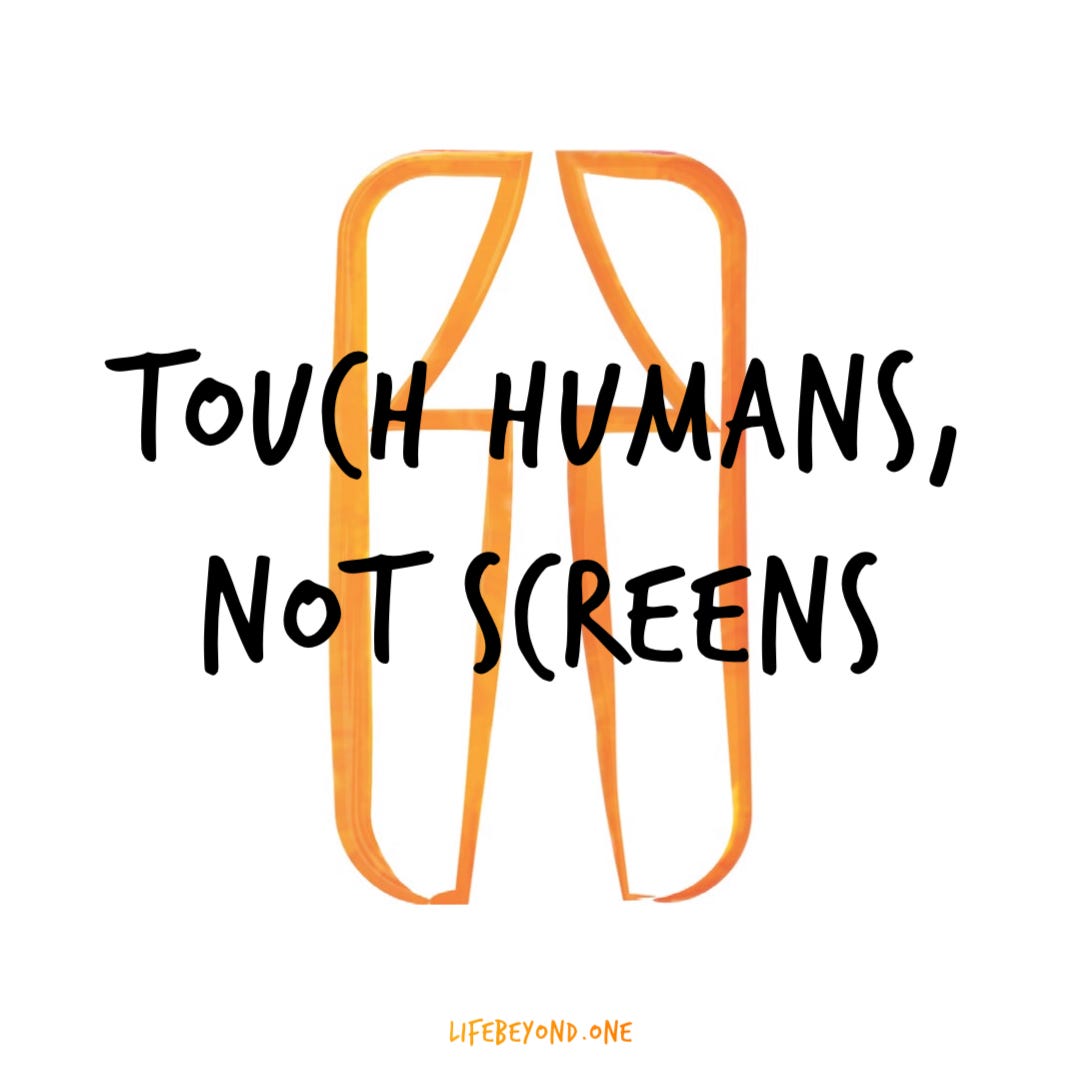
I literally wrote the book on social media and smartphone addiction. After suffering from it quite seriously myself. Yet in these interesting times we find ourselves in, I find it’s hard not to relapse, and I find myself arguing with my wife over how much time I spend on my phone. Again.
In this article I’m going to share some of the insights I gathered in writing my book ‘Life Beyond the Touch Screen’. Then I’ll share some further insights into addiction and addictive technology — and, perhaps more importantly:
I’ll share the — research-backed — steps I took, and the steps I advise anybody to take to combat smartphone addiction and to maintain, protect and even promote your mental health. The core of this advice will be to understand your internal triggers better, and to use technology aligned with your values and purpose.
We’re even going to go into some digital wellbeing and mental health aikido. You ready?
This is gonna be kind of a long one. You might want to skip ahead to the specific insights you came here for. Here’s the table of contents for this article:
- Understanding smartphone addiction: definitions, causes, and relevance.
- What are the mental health effects and risks of smartphone addiction or overuse?
-
Possible solutions to smartphone addiction: steps to decreasing your use of your digital devices.
- 1. Raising awareness and increasing our understanding of the problem.
- 2. Recognizing an addiction: smartphone addiction tests.
- 3. Ending smartphone addiction: 5 basic steps.
- 4. Advanced steps: Purpose Aligned technology usage and environmental design.
Let’s dive in, shall we?
Understanding smartphone addiction: definitions, causes, and relevance
First, let’s get a broader and deeper understanding of the problem at hand.
What is smartphone addiction?
It’s a little bit tricky to answer this question in a straight-forward fashion. Although it might seem pretty obvious, and we all have an intuitive understanding of what it means to be addicted to our technology.
But please allow me to take you a little bit deeper than this surface level. What is addiction at all? And in the case of smartphones, social media or digital technology overuse — should we even call it ‘addiction’, or is it wiser and more helpful to call it something else?
Let me show you a few quotes to make you see why it’s a little bit more diffuse than ‘just giving you the definition’.
From Wikipedia:
The relationships between digital media use and mental health have been investigated by various researchers — predominantly psychologists, sociologists, anthropologists, and medical experts — especially since the mid-1990s, after the growth of the World Wide Web.
A significant body of research has explored “overuse” phenomena, commonly known as “digital addictions[2][3]”, or “digital dependencies”. These phenomena manifest differently in many societies and cultures. […]
The delineation between beneficial and pathological use of digital media has not been established. There are no widely accepted diagnostic criteria, although some experts consider overuse a manifestation of underlying psychiatric disorders. […]
The Diagnostic and Statistical Manual of Mental Disorders, Fifth Edition (DSM-5) does not include diagnoses for problematic internet use, problematic social media use, and gaming disorder (commonly known as video game addiction), whereas the eleventh revision of the International Classification of Diseases (ICD-11) recognises gaming disorder.
Experts are still debating how and when to diagnose these conditions. The use of the term addiction to refer to these phenomena and diagnoses has also been questioned.
[Emphasis mine].
As you can see: it’s hard to talk coherently and clearly about addiction to digital technology or smartphones specifically, for two main reasons:
- The potential of digital technology or social media to be addictive is relatively new, as is the technology itself. Less time to study these means less time to come to a consensus.
- The scientific understanding of addiction, in general, isn’t very clear, and very much colored by political thinking (as we will see in a minute);
These two make for a situation where the scientific community has yet to reach a clear consensus on 1: if such a thing as smartphone addiction even exists, and 2: if it does, what constitutes it.
Difficulty defining a problem, and a working definition of smartphone addiction
A third problem with defining ‘smartphone addiction’ or ‘nomophobia’ (literally; the fear of missing your mobile phone), or digital technology dependency - is in the nature of the technology. Combined with the nature of humans.
You see: by far most of the apps on our smartphones have some social or communicative element to them. Research shows that by far most of the time we spend on our devices, we spend communicating and/or on social media.
That is to say: social media and digital technology in general make it possible for human beings to connect to each other — which is something we naturally, direly crave. To feel good, to function in a healthy way, and to thrive.
The problem with smartphones, social media and digital technology in general — especially under covid-19 and lockdown conditions — becomes one of balance and a conscious choice, much more than a matter of black or white addiction or abstinence.
For more on the philosophical and scientific difficulties of defining the pathology, read this article — in which you will also find various definitions of smartphone addiction or digital dependency.
A working definition of smartphone addiction
But that’s likely not what you’re here for. You’re probably here to understand smartphone addiction better, to be able to combat it. For that, we should agree on a working definition to base our discussion and solutions on. Well, what should we use as a practical definition?
There is hardly a usable definition of 'smartphone addiction' to be found anywhere. trust me, I looked.
We can find something we can use as a proxy though, for now.
The US Addiction Center defines 'social media addiction' as follows, and for the purposes of this article I have added 'or: smartphone/smart devices' in brackets:
“Social media [or: smartphone] addiction is a behavioral addiction that is characterized as being overly concerned about social media, driven by an uncontrollable urge to [log on to or] use social media [or: smartphone] , and devoting so much time and effort to social media [smart devices] that it impairs other important life areas.”
That seems about right in the sense that it is useful. Remember; most of the time when we are using our smartphones or other devices, we're logging into or using social media - more on that below.
Let’s use this definition, for now. Diving into the causes of smartphone addiction, we will find more clarity.
What are the causes of smartphone addiction?
To answer this question, I think it might be interesting to again look a little bit deeper. What causes addiction at all?
There are two videos I’d like to share with you that I find to make our understanding of addiction and its causes clearer. This also makes our understanding of the allure of social apps and of technology addiction much deeper.
The first is this famed TED-talk by Johann Hari about addiction, where he explains how his research has led him to believe that “the opposite of addiction is not sobriety, but connection”:
The old-school ideas about punishing addicts for their behavior are rooted in old, politically and morally colored thinking, which have muddied the scientific understanding of the problem for maybe as much as centuries.
Now, what’s extra interesting ofcourse, in the context of social media or smartphone addiction, is the problem that social media and digital technologies in general essentially function to give us a sense of connection. The question is; is it the “right” kind of connection we’re getting, and is it a healthy way for humans to connect at all?
The second insight I want to share is the understanding I stumbled upon in this episode of the Tim Ferriss show with guest Gabor Maté:
In which renowned Canadian physician Maté explains his definition of addiction, as:
“Any behavior — including but not limited to the use of substances, but also for example problematic gambling, unprotected or otherwise dangerous kinds of sex, watching too much pornography; the overuse of smartphones or even the eating of certain foods — that makes the person feel good immediately, but has negative consequences for their life and health in the long run, and that is difficult to quit.”
By that definition, Dr. Maté states, all of us in the West could be said to be addicted to sugar, bread, sitting down and digital technology — as much as what most of us would define as a heroine-addict is addicted to heroine.
Dr. Maté goes on in the podcast to explain how in his personal vision — rooted in deep theoretical understanding and many years of experience in treating substance abuse —
Addiction is often if not always the result of coping mechanisms learned in our early childhood, to deal with stress.
This is almost scarily close to the understanding we gather from another expert in the field of habit formation and habit forming UX design for technology, Nir Eyal — and specifically his book ‘Indistractable’.
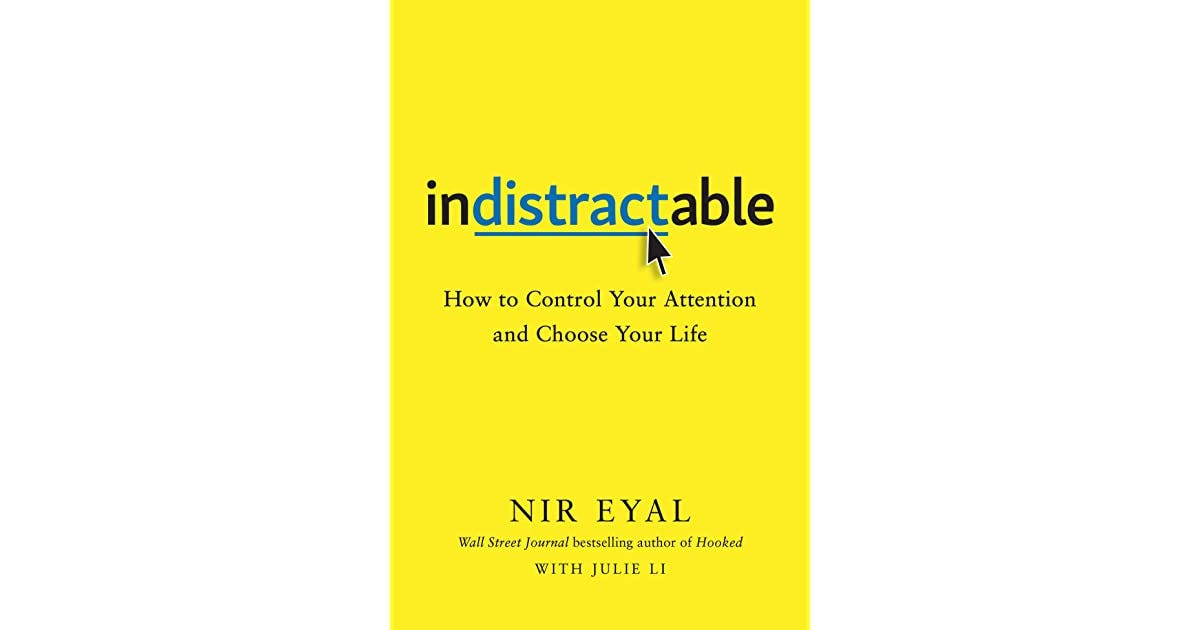
In that book*, Nir explains how oftentimes our moments of distraction are not actually triggered by our smartphones or other external factors — most often, he writes;
Distraction comes from within. Our escape into our digital (or any other) distractions, is often based on a desire to escape the discomfort within ourselves.
*In the same book and other places, Nir makes a pretty decent case as to why we shouldn’t call it ‘addiction’ and rather say we’re ‘hooked’. For the flow of this article, however, we’ll continue with the term ‘addiction’ and see how we can solve the problem.
So, what really causes smartphone addiction?
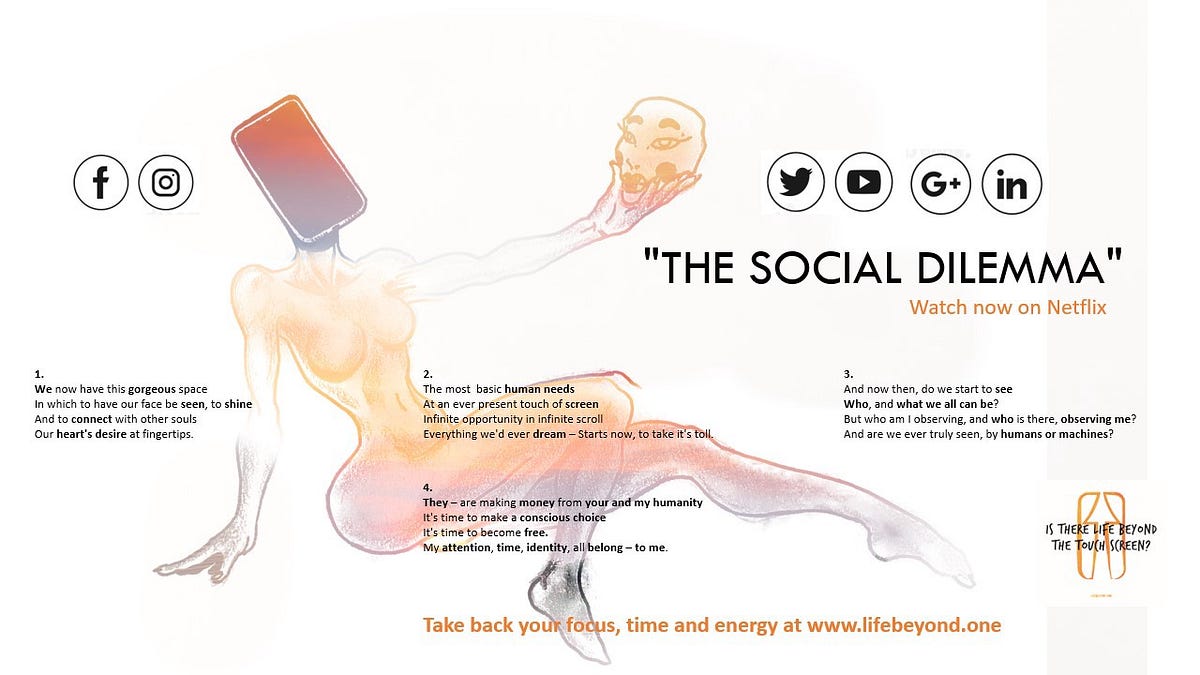
Yes, technology helps — and without smartphones and the apps on them, there would be no smartphone addiction, of course. Have a look at my review of the Netflix documentary “The Social Dilemma” to understand more about the role Big Tech and the design of social platforms have to play. Watch the documentary itself, too, if you hadn’t yet.
However, the main problem is not the technology. Its psychology, business models and UX design merely help us get addicted.
The main causes of smartphone addiction are the same as the root causes of any kind of addiction. As Psychology Today lists: genes, psychological factors such as childhood abuse or trauma, and other disorders such as depression; and finally environmental factors such as family relationships, accessibility and employment status — all come into play.
The main point is to understand the following three keys to addiction:
- Does the person feel connected to his or her environment, socially? If yes, that means there’s less chance of addiction.
- Does the person feel good about life and about themselves, generally (psychological well-being)? If yes, that means less chance of addiction.
- Does the person have healthy coping mechanisms to deal with stresses, large and small? If yes, that means less chance of addiction.
As you will see, these key factors also play a very interesting role in the development of — but also the cure for — social media or smartphone addiction. As you can also probably guess; these factors all come to be under quite some strain for many of us during the crisis that started in 2020 and continues on into 2021.
Why is smartphone addiction or social media addiction particularly relevant, and why especially now?
First of all, smartphone or social media addiction is relevant to some extent to anybody who owns a smartphone or one or more social media accounts.
Why do I say that?
Simply because if smartphone addiction is the extreme on a sliding scale of technology usage, and has a negative effect on our mental health (and we will see in the next section of this article just how badly it does), to an extreme extent — then we can extrapolate and state that smartphone overuse has a negative effect on any of us who use our smartphones more than we would like to.
Now, unsurprisingly, device usage worldwide had already been steadily on the rise for years prior to the events of 2020.

Adding to that, after the first quarter of 2020 — and extending into 2021 — we’re all using our devices and the social modes of communication they provide us with more than ever.
What is the effect that the current covid-19 crisis and lockdowns are proven to have on our device usage? What one would expect, is the following:
- The covid-19 crisis in itself is stressful for many people across the world;
- Covid-19 and subsequent lockdowns cause people to work and leisure from home at unprecedented levels, which leads to more technology usage;
- The stress from covid-19 is multiplied by the stresses of information overload and other negative effects of digital technology.
Turns out, this simple math works out and research indicates that this is exactly what is happening. In other words: the dangers of digital device addiction are more and more becoming the dangers of tech overuse — to each and every one of us. Now, how dangerous is that exactly?
What are the mental health effects and risks of smartphone addiction or overuse?
Let’s continue on the premise that “addiction”, assuming we can come to a (scientific) consensus at some point as to what would constitute that, is the worst level of negative impact tech can have on an individual human being.
In this article about the science and statistics on smartphone addiction we also focus on the positive effects of device usage. But what are the general negative impacts or risks of digital device usage on the individual, that we can say are supported by research?
Negative impact of smartphone dependence on the individual level
Here are a few of the many available studies documenting the negative effects of technology dependence on our mental health:
-
Anxiety and Confusion
A study from MIT found that students who were asked to give up their phones for just 24 hours suffered from anxiety and confusion without their mobiles. -
Withdrawal symptoms
A study from the Journal of Computer-Mediated Communication that found that some young people suffered from withdrawal symptoms (like increased blood pressure and heart rate) when separated from their phones. -
Increase of suicide rates in young people
A study that linked the increase of suicide rates in young people to an increase in the use of social media and mobile phones. The correlation was evident, although causation was not shown in this study. In the article, a fair case is made to accept the possibility of causation (more use of social media -> higher suicide rates) at face level, however. -
Social Media Brain Chemistry: Differences in brain structure, neurotransmitters and brain function*
If you prefer something a little more concrete, a study presented at the Radiological Society of North America conference found differences in brain structure and brain function (including different levels of chemicals in the brain) in teens who were thought to be addicted to smartphones (and corresponding “normalization” of brain structure and function after these teens went through treatment).
*Differences, not necessarily negative differences. The point here, being: we should know if — and if so how and to what extent — our brains are being impacted on a physical level.
BankMyCell did a great job of analyzing a compilation of a fair amount of studies. In the infographic they share here, they show some of the highlights.
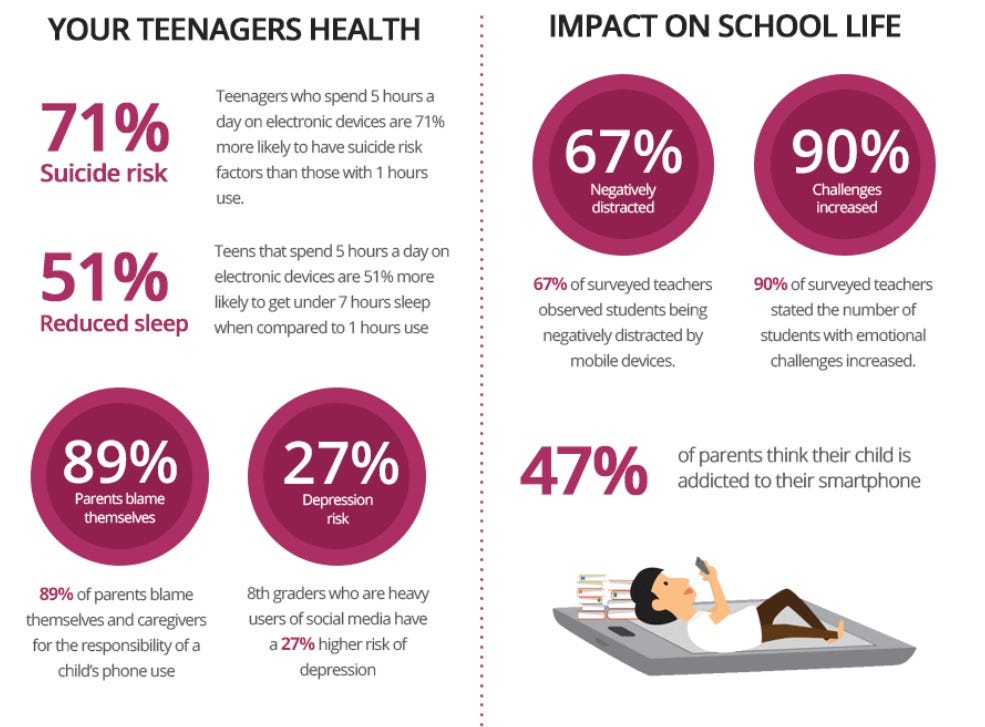
From BankMyCell: “All the studies and research data we examined at BankMyCell found that dependency on smartphones does have a real impact on mental and physical health.”
Negative impact of smartphone dependence on the societal or group level
Harder to research and substantially prove is the positive or negative effect of digital technology usage on the societal level.
What we can say is that these technologies have most probably facilitated the further political polarization in many societies worldwide, and the proliferation of fake news. Connected to these are the use of digital technology for unethical persuasion in the political and business arenas.
It’s also reasonable to say that social media and Big Tech in general have played a role in the incitement of violence and even ethnic cleansing in the case of the Rohingya in Myanmar and other cases. Watch the above video for more insights.
Finally, the way that technological capabilities and the ownership of tech companies are distributed across the world, exacerbates already rising levels of inequality across and within societies.
All of these can logically be expected to exacerbate the negative effects on the individual levels, much rather than soften them.
Smartphones: mental health effects and side effects
As you can see, there is ample evidence that technology overuse can have impressive, negative effects on our mental health. Technology overuse and smartphone addiction have been proven in various studies to be linked to burnouts, depression, loneliness, anxiety and even suicidal thoughts and behavior, at least for teens in the United States.
A causal link is generally difficult to prove, but at least in one study among 143 students at the University of Pennsylvania, social media were proven to have a causative effect on depression and feelings of loneliness.
- Find a more extensive summary of research findings here.
We can all but equate smartphone addiction to social media addiction; most of our usage of our smartphones comes from the usage of social media, as mentioned before, and most of that usage goes to the five major ones being Facebook (& FB Messenger), Youtube, Whatsapp, Instagram (and TikTok) in the West.
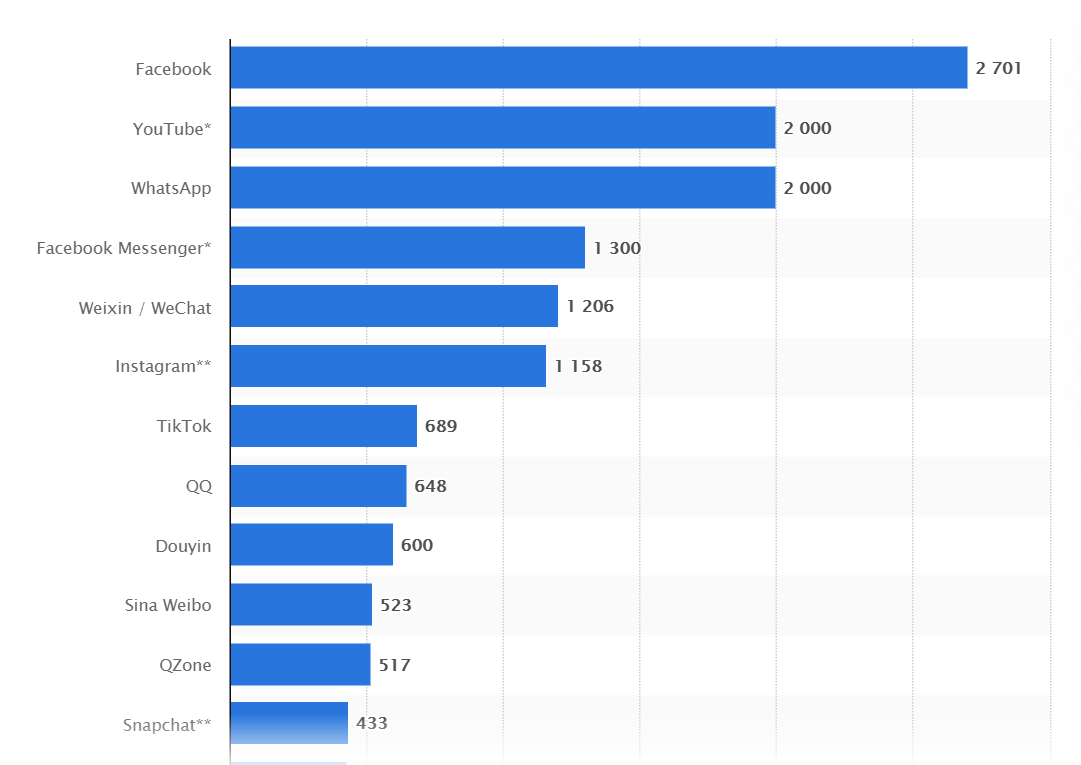
By now, by and large, the negative effects of technology overuse on our mental health and psychological wellbeing are fairly well established. There is a reasonable consensus among scientists and other experts in the field that we need to curb our usage of these devices and apps — even in the face of the earlier mentioned issues in defining a pathology.
Does that mean digital technology in general, and smartphones or social media specifically, are evil? The technology in and of itself is, of course, neutral.
Putting things in perspective: the upside of Social Media and other digital technologies
26% of car accidents in US were caused by smartphone distraction in 2014. Smartphone usage is linked to a decrease in focus and productivity in workers. Studies have linked the increase of suicide rates in young people to an increase in the use of social media and mobile phones. This is all true.
Being distracted and anything other than in the moment has become the social norm. And that is as far removed from fully living and appreciating life as we could get.
At the same time, digital technology made the Arab Spring possible. Smartphones facilitated the Black Lives Matter and MeToo movements. Digital technology makes our lives so much easier in so many ways; it makes it easier to get where you’re going, to know what’s going on in the world, or what weather it’s going to be.
It’s making it possible for you and I to connect, right now.
The technology in and of itself is neutral. The problem, as the Architect reminds Neo in The Matrix, is choice.

How do we choose to have our new and rapidly evolving tools and capabilities impact our lives as individuals, organizations and as a global society? Combating the effects of truly dangerous amounts of social media usage, or simply using our devices more than is truly beneficial to our lives, starts right there — with making a conscious choice.
Possible solutions to smartphone addiction — or: decreasing your use of digital technology
This is probably gonna be helpful, whether or not you’re a full-fledged smartphone addict. Read on to protect yourself from addiction, or to combat addiction if it’s already gotten you.
The World Association for Social Psychiatry, shows us that under lockdown conditions, one plus one indeed equals two: in a special edition of their journal we come across an article with the revealing title:
“Digital burnout — COVID-19 Meditates Excessive Technology use Stress”.
The authors of this article show how the use of digital technology has raised drastically in the first few months of 2020 — in leisure time as well as for work — and that this indeed has a direct effect on stress and burnout-related symptoms.
It seems obvious that finding balance in the way we use digital technology in general, and social media specifically, will be beneficial to most of us by far — and especially those of us who are at risk of truly becoming addicts.
What can we do? How can we use our devices less, and still feel a sense of connection?
1. Raising awareness and increasing our understanding of the problem
The main and first thing we can do to improve our relationship with technology, is simply this:
To raise our awareness about the possible negative consequences of digital technology usage.
How do we do that? Glad you asked. We do this by doing what you’re doing right now: reading about it, finding more information about it; doing your own research (and please, don’t take my words nor the research and statistics I share as absolute truths — do your own research and maybe use the links I provide as a starting point).
Next to that, it’s imperative we take action. Sustained action towards change in behavior is helped by two things — next to awareness about the problem and the motivation to do something about it:
1. social support, and;
2. designing your environment.
More on these in the next section of this article.
Talk to the people around you about the problem, share thoughts and discuss ways you can try to change your behavior and help each other in the process. Next to that: put your phone out of sight, change your settings, and use its pings and dings to your advantage — for instance by setting timers and alarms to tell you to take a break and go for a stroll.
Use the capabilities of digital technologies to your advantage, not the tech companies’.
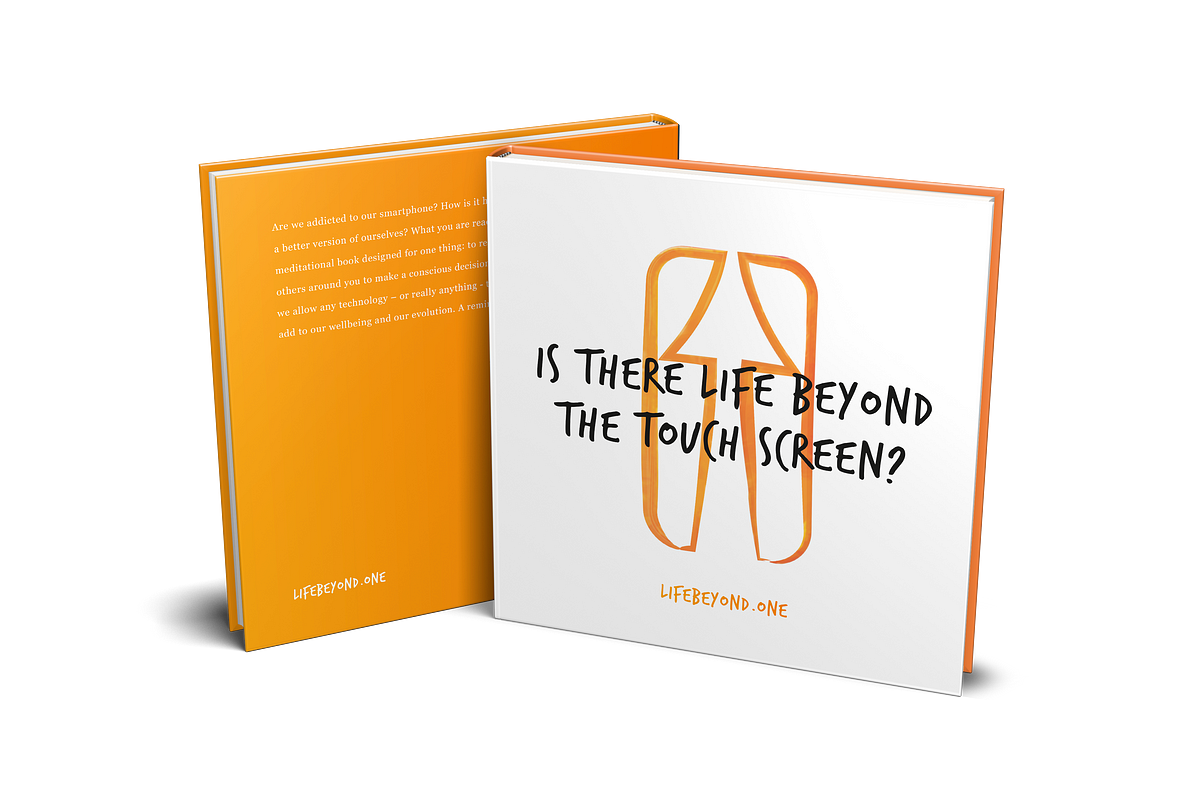
My book “Life Beyond the Touch Screen” — you can get it here as an e-book or paperback — is a meditational booklet designed to increase our consciousness around the impact of digital technology on our lives as individuals, in organizations and society. I understand from readers it’s also a great conversation starter. It might help.
2. Recognizing a smartphone or social media addiction: smartphone addiction tests
The second thing we can do is to assess if we or the person that we think is at risk, might actually have a serious problem.
Here’s a quick, global assessment you can take right away, from the US Addiction Center website:
“If you’re worried that [you or] someone [close to you] may be at risk of developing an addiction to social media, ask yourself these six questions:
- Does he/she spend a lot of time thinking about social media or planning to use social media?
- Does he/she feel urges to use social media more and more?
- Does he/she use social media to forget about personal problems?
- Does he/she often try to reduce use of social media without success?
- Does he/she become restless or troubled if unable to use social media?
- Does he/she use social media so much that it has had a negative impact on his/her job or studies?
If you answered “yes” to […] more than three of these questions, then you may have or be developing a social media addiction.”
- If you want to take a more sound and slightly more conclusive test, you might want to check out this Nomophobia test based on research from Iowa State University, or:
- This test by Dr. David Greenfield, at the Center for Internet and Technology Addiction.
Both of these tests have a scientific basis and are simple to use. Answer the questions and tally up your scores to get a decent indication of whether you or someone you care about indeed has a serious addiction to technology, their smartphone, and/or social media.

3. Ending smartphone addiction: 5 basic steps
Although I now call myself a marketing and innovation philosopher, I have a background in psychology. I spent years doing the research for my own book, to fight my own smartphone addiction (and other addictions as well, such as smoking — the mother of difficult-to-knock addictions). I continued learning and doing research about the issues, as well as coaching people around me.
From all this, I have devised the following five-step plan to specifically help in fighting technology addiction and smartphone overuse.
These are the basic steps to ending smartphone addiction. In the next section I offer you my five advanced steps, to go even beyond that.
-
Raise (your) awareness.
As discussed in the previous sections. My book ‘Life Beyond the Touch Screen’ and in general my website lifebeyond.one may be a good place to start your journey.
Also, the Netflix Documentary “The Social Dilemma” offers a good amount of insights, as do the books ‘Hooked’ and ‘Indisctractible’ by Nir Eyal.
Finally, the Center for Humane Technology offers a lot of resources and I advise you to check these out as well. Do. Your own. Research. -
Test yourself.
Not sure whether you yourself or someone else whose digital behavior worries you, actually have or has a problem? Check out one of the tests in the above section of this article. If that doesn’t satisfy you, it can hardly ever hurt to speak to a medical doctor or psychologist about what you’re experiencing. -
Do a digital detox.
This is really something that I advise anybody to do from time to time, regardless if you think you have a serious problem or not. Go offline for a few days or even for a full month, and see how that feels. Experience the wonder of your own, uninterrupted mind.
A digital detox — even if only for a few days — can be a great way to reset your brain, neurochemicals, and your behavior to baseline, healthy levels. It also makes it easier to choose and design the behavior that you think is healthy, going forward. -
Take the basic steps to digitally declutter your life.
If you hadn’t already — and in case you have, but it’s been a while: take the basic steps to digitally declutter your life and environment. Remove unnecessary apps from your phone, tablet, laptop or PC homescreen.
Plan phoneless and internet-free time; meditate, walk, chill with people with no phone in sight, and plan these moments to recur in your schedule. Keep your smartphone and other devices out of your bedroom. This is a big one for relationships and specifically your love life.
Turn off notifications for any app that doesn’t absolutely need to interrupt you for your life to function, and work offline whenever and wherever possible, to improve your focus. -
Use specific tools and apps that help you curb social media usage.
Why not — as a type of productivity and digital mental health Aikido — use the capabilities of your smart devices to your advantage? It’s entirely possible to go beyond simply turning off notifications and working offline, by using specific tools created to help you maintain focus.
Here are a few I recommend:
- The selfcontrol app; a free Mac app that helps you avoid distracting websites.
- The Freedom app; an internet, social media and add blocker.
- Forest app; an app designed to help you stay away from your smartphone and focussed on your work.
- FocusMate, which couples you to a human accountability partner.
- FocusToFlow, which acts as a virtual accountability partner;
- And finally, the LetMeThink app + physical token that block you from using distracting apps and helps you focus on your work.
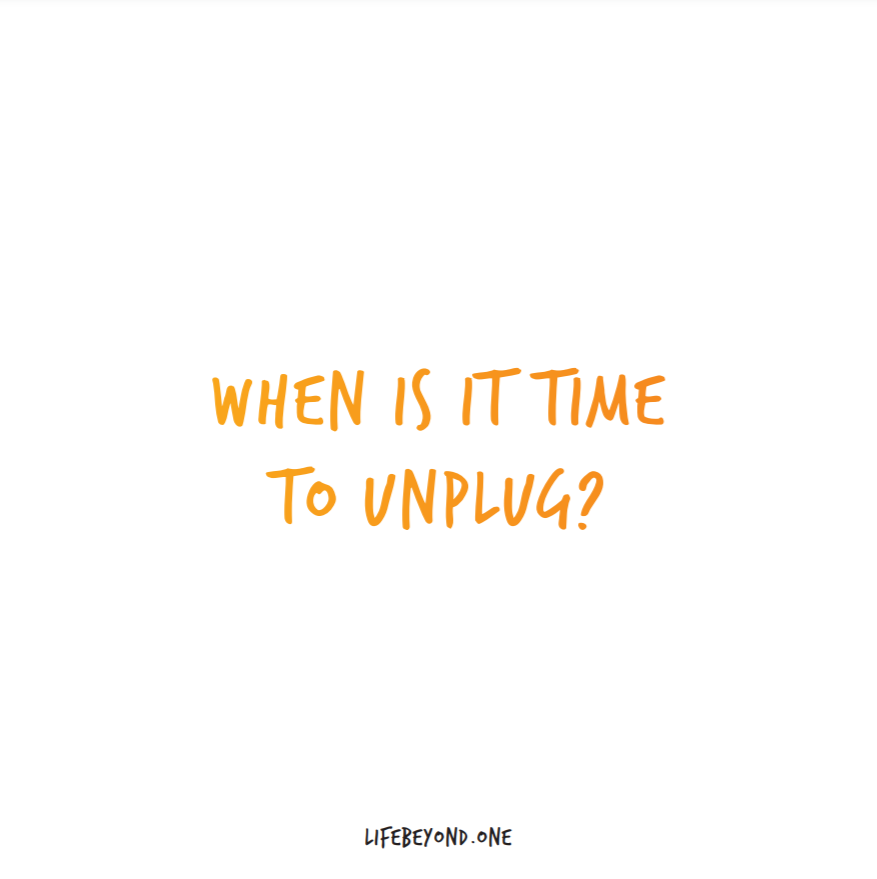
Now, after taking these basic steps, you might be ready to take it to the next level.
4. Advanced steps: Purpose Aligned technology usage and environmental design
Remember the productivity & mental health Aikido described in the last step of the five basic steps above? We can go a little further on that stream, my friend, and go beyond just simply overcoming digital technology addiction to 10X ourselves with the help of technology.
The core of my methods and thinking is not to get you to stop using digital technology. There’s just way too much good to get from technology — if used in the right way.
The core of the advanced steps — and of the advice near the end of my book — is to align our usage of technology with our Purpose, and then to align everything else in our environment with that as well, as much as possible. Starting with your relationships and communications, and the way you spend your time and attention— and building from there.

Take these advanced steps, and take beating smartphone addiction to the next level— to go beyond:
-
Figure out your purpose and values and stay connected to those
This is my way of saying what Nir Eyal would label ‘Going from Distraction to Traction’. Take the time to figure out what your Purpose is — that is to say; what a higher goal is for you in your life that you can feel inspired by. What are your values? What is the value you can create for people around you?
Start looking at ways to use your technology aligned with your Purpose and Values, in stead of reactively.
Read Nir Eyal’s ‘Indistractable’ to understand more about the need to understand to go from Distraction to Traction: spending more time on the people and activities that matter most to you.
From there on out: ask yourself the question on the regular: is what I’m spending my time and attention on right now aligned with my Purpose and Values, or not?
I’d also advise you to to journal daily, using a little notebook — preferably physical (like a Bambook) but digital if you must, to help stay connected to your sense of purpose and your values — journaling has been proven to help you make small choices based on those instead of on the slings and arrows of daily life. -
Figure out your most important relationships; structure, and align your time and attention spend
Environmental design goes beyond the design of your physical and digital environment, as it pertains to habit formation. It’s also — to a very large and influential extent — about the design of your social environment.
Take the time to look at your social environment; your first circle of 5; your closest relationships — at home and at work; your 15 closest relationships; your circle of 50 friends and family members, and so on.
Which of these relationships matter most to you? Which matter most to your Purpose and values as you have defined them? Now, how are you spending and allocating your time across these different circles and relationships? Write it down, check your calendar, and then check your values.
Next to that, if you’re serious about using technology less, or using technology in a more Purpose-driven and balanced way, it can be very wise to make your direct social environment a part of that. Make sure your spouse or your boss or coworkers know you’re trying to be offline more. Talk to your children, give them a healthy example.
Go one step beyond that, and find one or more peer-to-peer coaches or accountability-buddies for yourself, as the app FocusMate would have you do on their platform. Have regular, short accountability meetings with your peer-to-peer coach and help each other stay on track with your goals. -
Figure out what time you need for self-care
To be the best you can be, to stick to your plans and your carefully designed new habits — you need to be well-rested. As happy as possible. Energetic and inspired. This works for quitting a smartphone addiction, but just as well for quitting smoking, alcohol, et cetera.
Assess how much time you need for self-care; mental, physical, emotional — to rest, to recharge, to work out; to hang out, to do nothing, to have sex, to eat healthily — or to cheat on your diet and just enjoy yourself — and plan that time. Include time for lame stuff like administration, taxes, and house cleaning chores. Cluttered spaces and administrative/financial stresses are the opposite of self-care.
In general, nothing spells: “I’m not gonna stick to my new habits” as clearly as a tired, strung-out, stressed you. Use your p2p coach as a check; first and foremost at every p2p coaching session or accountability-meeting you should be asking each other: “How have you been taking care of yourself?” -
Strategically plan & automate your work
Have you ever taken the time to look at how you use your time at work? To look at what tasks take up the most of your time, and to check these tasks along the measures of a. where do you create the most value, and b. what tasks align best with your personal goals or purpose, and those of your team and the broader organization?
So often we simply spend our time the way we simply spend our time, and often based on what seems urgent in the moment.
Figure out what time you need to do the most important parts of your job, and rebuild your daily and weekly schedule accordingly. Next, find out what minor or repetitive tasks you can delegate — who knows how happy and how aligned with Purpose someone else could be in doing those tasks?
Crucially, next, assess what tasks you can batch and automate, and use tech to your advantage; simple automation of workflows can easily 2X your productivity all by itself.
Schedule a quarterly check on your schedule, to see if the way you’re spending your time is still the best and most aligned way, and adjust where needed. -
Plan your time diligently and Purpose-aligned
Plan the time for finding your Purpose. Plan the time for staying connected to it. Plan the time for self-care and for relationships. Plan time to connect with your peer-to-peer coach. Plan your work strategically.
As you see: the management of time is one of the most important, crucial steps to not only overcome social media or smartphone addiction, but to become the best version of you that you could possibly be.
To that order: keep an eye on your calendar daily, weekly, and monthly. Make your schedule more important, and make it a point to stick to your planning — including when you plan to do absolutely nothing.
But be agile; leave space to be able to respond to spur-of-the-moment requests, and make a conscious choice to deviate from your planning whenever you see fit.
Just keep checking yourself to make conscious choices to do spend your time and attention on those things, people, relationships, and taks that matter most to you.
The easiest way to help you do that, is to create a schedule, to regularly meet with a human being to discuss your success in sticking to that schedule, and to regularly assess and adjust your schedule as needed. Finally, daily (bullet) journaling can greatly help in this area as well.
So, my friend, there you have it. The five basic steps to quit social media addiction, and five advanced steps to go beyond that and become the best and most happy version of you that you could possibly be. I hope you find these helpful. I’d love to hear from you if you do.
One last thing, before we wrap up this article and get to work on ourselves:
The Loneliness pandemic: finding balance and staying connected
Do you know about the increasingly deadly affliction all societies are facing right now? I’m not talking about Covid-19. I’m talking about Loneliness. A study of 308,849 people found that loneliness increased the chances of all-cause mortality by 50%. This is a greater risk factor than obesity.
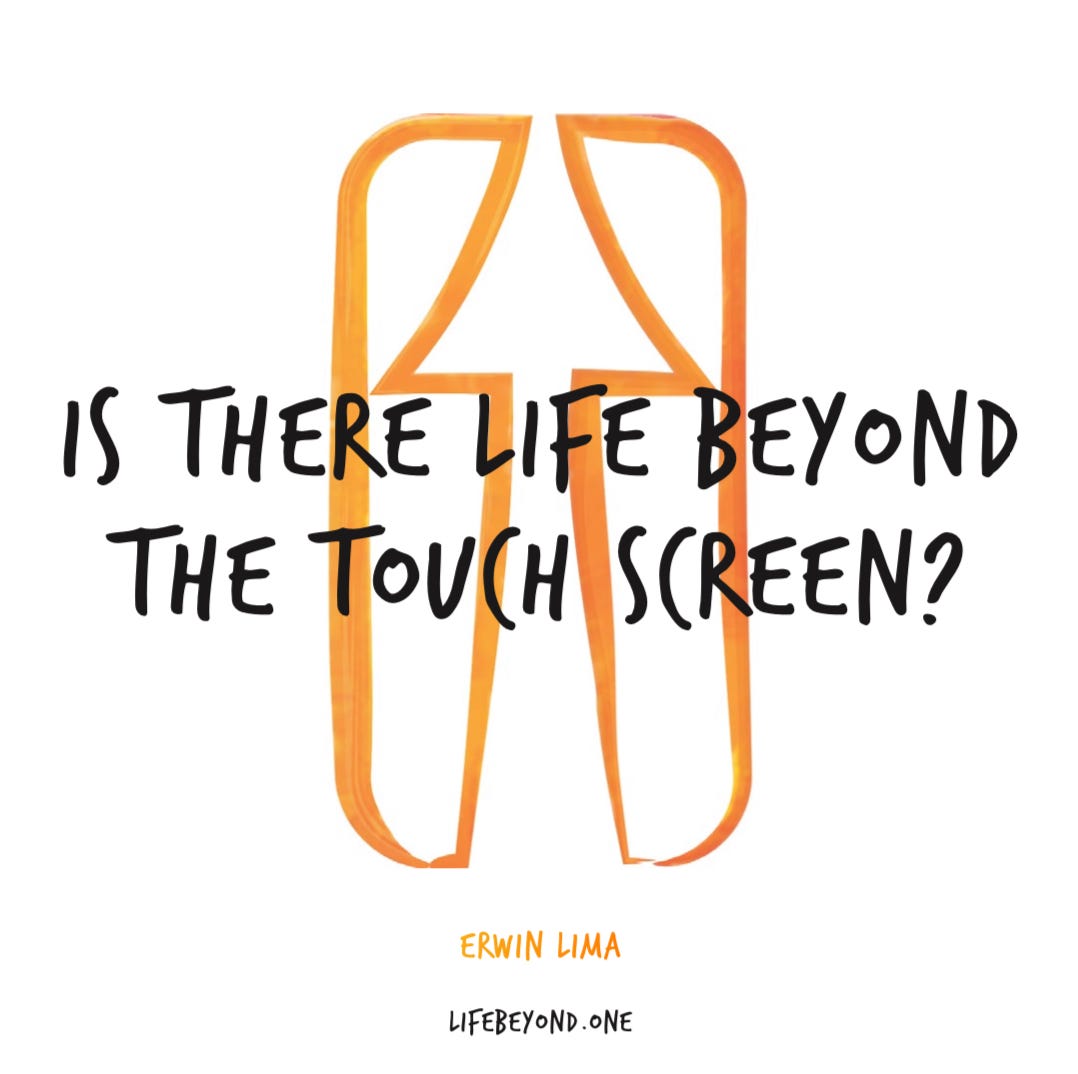
Be it as it may that many if not all of us are now in danger of serious digital overload, stress, burnout and all other negative consequences of using digital technology and social media too much — we’re still human, and we need to stay connected to feel good and thrive.
Make time to connect with people, and if you can’t be together any other way, use the technological tools we have at hand today to stay in touch.
To that, you might find the following hierarchy of modes of communication useful:
- Whenever possible, meet up in person, otherwise;
- Phone or videochat, or;
- Chat message each other for a bit, or;
- Send an email,
- Or send a one-off chat message to check in; and finally,
- Check in with the 150 people of your ‘broader tribe’ via updates on social media, likes, and comments.
Needless to say; plan and spend more time on 1 & 2 than you would on 3 & 4, and so on.
Final tips:
- Revisit step 2 of the advanced steps for Purpose Aligned technology usage in the last section, and connect the circles of people around you to the list above. Plan and spend the most time and attention on those closest to you by meeting up in person and/or calling; keep tabs on the broader circles with text messages and the likes, and so on.
- Think about other possibilities to connect; though I used to not understand why people used them, I now find that a heartfelt voice recording can land right between calling each other up and simply chatting, and that a hand-written letter for instance can be more intimate than even a phone call.
Stay connected my friends, use technology to your advantage and maintain a healthy body and mind. To that; stay connected to your Purpose, to your People, and to your True Self. It’s the only way to start building towards a better and happier You, and a better and happier World.
I hope you have found what you read here useful. I’d be happy to hear from you if you have any further questions, suggestions, additional remarks or insights.
My book “Life Beyond the Touch Screen” is available here as an e-book or paperback. It’s a meditational booklet designed to increase our consciousness around the impact of digital technology on our lives as individuals, in organizations and society. A reminder to choose. Take back your energy, focus, and time: get your copy now.
For a limited offer use code MentalHealthFocus2020 on my website www.lifebeyond.one for a 15% discount on all items.
This story was originally posted at Globalowls.com
